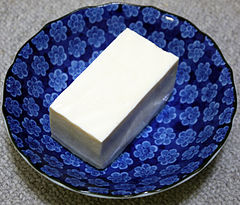Salvia nemorosa (woodland sage, Balkan clary) is a hardy herbaceous perennial plant native to a wide area of central Europe and Western Asia.
It is an attractive plant that is easy to grow and propagate, with the result that it has been passed around by gardeners for many years. Its wide distribution, long history, and the ease with which it hybridizes have resulted in many cultivars and hybrids—along with problems in clearly identifying the hybrids and their relationship with S. nemorosa. It was named and described by Carl Linnaeus in 1762, with "nemorosa" ("of woods") referring to its typical habitat in groves and woods.
In northern Britain, Salvia nemorosa and Salvia pratensis are both in danger of disappearing due to depredation from slugs.
There are numerous cultivars widely grown in horticulture. Many of them are hardy to –18 °C., with flowers ranging in color from violet, to violet-blue, rosy pink, and even white. All are perennial, with numerous leafy stems growing from the base at the beginning of summer. The plant prefers full sun, good drainage, and moderate weekly watering.
 Leaves of Salvia nemorosa have been used in Turkish medicine to stop bleeding by applying externally. Diterpenes and triterpenes have been isolated from aerial parts of S. nemorosa: nemorone, nemorosin, horminone, 7-acetylhorminone, salvinemorol, megastigmane glycosides (salvionosides A, B and C), pachystazone, salvipisone, α-amyrin, ursolic and oleanolic acids, stigmast-7-en-3-one, 24-methylenecycloartanol, stigmast-4-en-3-one, β-sitosterol, stigmast-7-enol, as well as flavonoids salvigenin, eupatilin, apigenin and luteolin.
Leaves of Salvia nemorosa have been used in Turkish medicine to stop bleeding by applying externally. Diterpenes and triterpenes have been isolated from aerial parts of S. nemorosa: nemorone, nemorosin, horminone, 7-acetylhorminone, salvinemorol, megastigmane glycosides (salvionosides A, B and C), pachystazone, salvipisone, α-amyrin, ursolic and oleanolic acids, stigmast-7-en-3-one, 24-methylenecycloartanol, stigmast-4-en-3-one, β-sitosterol, stigmast-7-enol, as well as flavonoids salvigenin, eupatilin, apigenin and luteolin.
Tradescantia virginiana (Virginia spiderwort) is the type species of Tradescantia (spiderwort) native to the eastern United States. Spiderwort is commonly grown in gardens and many garden spiderworts seem to be hybrids of T. virginiana and other Tradescantia species.
Tradescantia virginiana is a herbaceous plant with alternate, simple leaves, on tubular stems. The flowers are blue, purple, or white, borne in summer.
T. virginiana is found in eastern North America, west to Missouri, south to northern South Carolina and Alabama, and north to Ontario, Vermont, and Michigan. Much of the northern range, however, may represent garden escapes rather than indigenous wild populations.
Grow in average, medium moisture, well-drained soil in part shade to full shade. Prefers moist, acidic soils. Tolerant of poor soils. Divide clumps when they become overcrowded. Foliage declines after flowering and should then be cut back almost to the ground to encourage new growth and a possible fall bloom. Can self-seed and spread in ideal growing conditions.
Bacopa monnieri (waterhyssop, brahmi, thyme-leafed gratiola, water hyssop, herb of grace, Indian pennywort) is a perennial, creeping herb native to the wetlands of southern India, Australia, Europe, Africa, Asia, and North and South America.
Bacopa is an important medicinal herb used in Ayurveda, where it is also known as "Brahmi," after Brahmā, the creator God of the Hindu pantheon. Bacopa has traditionally been employed as a neurological tonic and cognitive enhancer, and it is currently being studied for its possible neuroprotective properties.
 The leaves of this plant are succulent, oblong and 4–6 millimeters thick. Leaves are oblanceolate and are arranged oppositely on the stem. The flowers are small and white, with four or five petals. Its ability to grow in water makes it a popular aquarium plant. It can even grow in slightly brackish conditions. Propagation is often achieved through cuttings.
The leaves of this plant are succulent, oblong and 4–6 millimeters thick. Leaves are oblanceolate and are arranged oppositely on the stem. The flowers are small and white, with four or five petals. Its ability to grow in water makes it a popular aquarium plant. It can even grow in slightly brackish conditions. Propagation is often achieved through cuttings.
Fragaria vesca, commonly called wild strawberry, woodland strawberry, Alpine strawberry, European strawberry, or fraise des bois, is a perennial herbaceous plant that grows naturally throughout much of the Northern Hemisphere, and that produces edible fruits.
http://easss.com/travel/hotel/agoda
 Alpine strawberry has an undeserved reputation among home gardeners as hard to grow from seed, often with rumors of long and sporadic germination times, cold pre-chilling requirements, etc.In reality, with proper handling of the very small seeds (which can easily be washed away with rough watering), 80% germination rates at 70°F within 1–2 weeks are easily achievable.
Alpine strawberry has an undeserved reputation among home gardeners as hard to grow from seed, often with rumors of long and sporadic germination times, cold pre-chilling requirements, etc.In reality, with proper handling of the very small seeds (which can easily be washed away with rough watering), 80% germination rates at 70°F within 1–2 weeks are easily achievable.
Typical habitat is along trails and roadsides, embankments, hillsides, stone- and gravel-laid paths and roads, meadows, young woodlands, sparse forest, woodland edges, and clearings. Often plants can be found where they do not get sufficient light to form fruit. In the southern part of its range, it can only grow in shady areas; further north it tolerates more sun. It is tolerant of a variety of moisture levels (except very wet or dry conditions). It can survive mild fires and/or establish itself after fires.
 Although F. vesca primarily propagates via runners, viable seeds are also found in soil seed banks and seem to germinate when the soil is disturbed (away from existing populations of F. vesca).
Although F. vesca primarily propagates via runners, viable seeds are also found in soil seed banks and seem to germinate when the soil is disturbed (away from existing populations of F. vesca).
Evidence from archaeological excavations suggests that Fragaria vesca has been consumed by humans since the Stone Age. The woodland strawberry was first cultivated in ancient Persia where farmers knew the fruit as Toot Farangi. Its seeds were later taken along the Silk Road towards the far East and to Europe where it was widely cultivated until the 18th century, when it began to be replaced by the garden strawberry, (Fragaria × ananassa), which has much larger fruit and showed greater variation, making them better suited for further breeding.
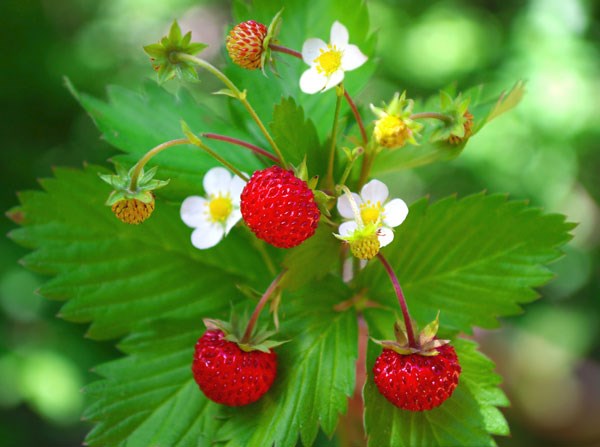
Woodland strawberry fruit is strongly flavored, and is still collected and grown for domestic use and on a small scale commercially for the use of gourmets and as an ingredient for commercial jam, sauces, liqueurs, cosmetics and alternative medicine. In Turkey hundreds of tons of wild fruit are harvested annually, mainly for export.
The musk strawberry or hautbois strawberry(Fragaria moschata), is a species of strawberry native to Europe. Its French name hautbois strawberry may be anglicised as hautboy strawberry. The plants are hardy and can survive in many weather conditions and are cultivated commercially on a small scale, particularly in Italy. The fruit are small and round; they are used in the gourmet community for their intense aroma and superb flavour, which has been compared to a mixture of regular strawberry, raspberry and pineapple. Popular cultivated varieties include 'Capron' and 'Profumata di Tortona.
http://easss.com/travel/hotel/agoda
 Musk strawberries grow wild to a limited extent in the forests of Central Europe, north into Scandinavia, and east into Russia. The musk strawberry is found growing along the edges of forests and requires moist and sheltered sites since they do not tolerate temperature fluctuations.
Musk strawberries grow wild to a limited extent in the forests of Central Europe, north into Scandinavia, and east into Russia. The musk strawberry is found growing along the edges of forests and requires moist and sheltered sites since they do not tolerate temperature fluctuations.
Musk strawberry has long been in cultivation in parts of Europe. This species was the first strawberry of any sort with a cultivar name, which was Le Chapiron (1576).[4] By 1591, the cultivar was called Chapiton, then later Capiton. In the early 17th century an illustration appeared in the Hortus Eystettensis as fraga fructu magno. It was mentioned by Quintinye, gardener to Louis XIV, as Capron in 1672.[4] At the beginning of the 19th century musk strawberries were the most common garden strawberry in Germany.
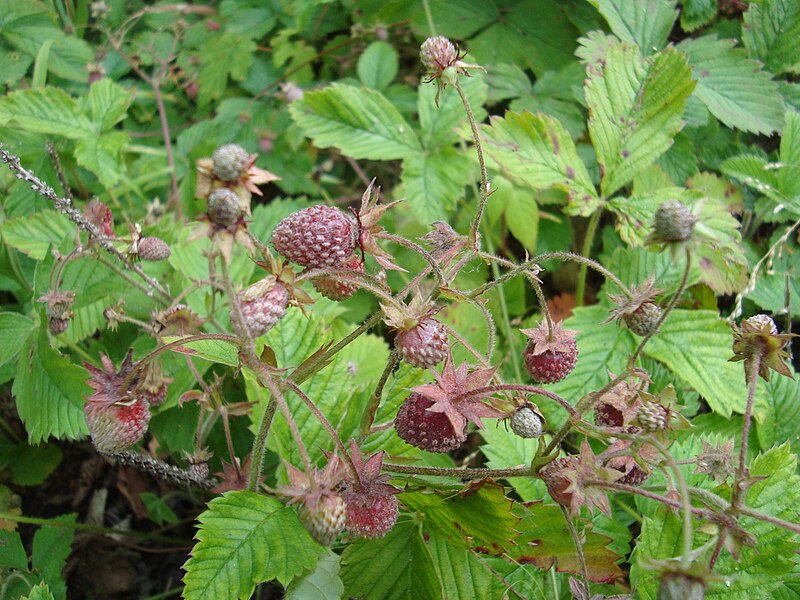 Cultivation of musk strawberries is not very different from that of garden strawberry (Fragaria × ananassa) or alpine strawberry (Fragaria vesca); the plants thrive in nutrient-rich soils. However, neither female plants nor hermaphrodite plants are self-fertile; they require pollen transfer from a male or a different hermaphrodite clone (or cultivar) of the same species, which is usually achieved by insect pollinators.
Cultivation of musk strawberries is not very different from that of garden strawberry (Fragaria × ananassa) or alpine strawberry (Fragaria vesca); the plants thrive in nutrient-rich soils. However, neither female plants nor hermaphrodite plants are self-fertile; they require pollen transfer from a male or a different hermaphrodite clone (or cultivar) of the same species, which is usually achieved by insect pollinators.
Calochortus flexuosus is a species of lily known by the common names winding Mariposa lily and straggling Mariposa lily.
This is a bulbous perennial wildflower native to the Southwestern United States, the Mojave Desert in California, and northern Mexico. It is most often found in desert scrub, growing up through low shrubs.
http://easss.com/travel/hotel/agoda
 Calochortus flexuosus is mainly one long naked stem with only one or two small leaves toward the base. The stem may branch and is usually winding and bent or curving.
Calochortus flexuosus is mainly one long naked stem with only one or two small leaves toward the base. The stem may branch and is usually winding and bent or curving.
At the end of the stem is a showy flower in shades of pink or lavender to white, with solid yellow and stripes or spots of white and red at the base of each petal.
 With their grass-like leaves and stem and their exotic, vase-like flowers, the three Calochortus species are favorites among many wildflower enthusiasts. Aptly, "Calochortus" from the Greek "kalos", means "beautiful". "Chortos" means "grass" and refers to the grass-like leaves.
With their grass-like leaves and stem and their exotic, vase-like flowers, the three Calochortus species are favorites among many wildflower enthusiasts. Aptly, "Calochortus" from the Greek "kalos", means "beautiful". "Chortos" means "grass" and refers to the grass-like leaves.
"Mariposa" is Spanish for "Butterfly" and "Sego" is a Shoshonean word for "edible bulb".
On May 17, 1806, near what is today Kamiah, Idaho, Meriwether Lewis collected the first plant of the genus that came to be called "Calochortus". The plant was given to Frederick Pursh for analysis and he assigned the new genus and species names, Calochortus elegans.
Calochortus clavatus is a species of mariposa lily known by the common name clubhair mariposa lily with golden flowers and a depressed gland. It is found in central and southern California. Some have unmarked petals, others range from heavily marked to lightly pencilled in red brown. Anthers can be maroon red, pale brown, cream, pale lavender or beige. It can be a bit challenging to grow in very wet climates as it develops fungal infections.
http://easss.com/travel/hotel/agoda
There is a wide variety in the various wild populations and five varieties recognized in the Jepson Manual: Higher Plants of California. Kew recognizes three varieties, but people observing this species in the wild say there is such a variation in the different populations, that even the characteristics that are supposed to separate them are not constant.
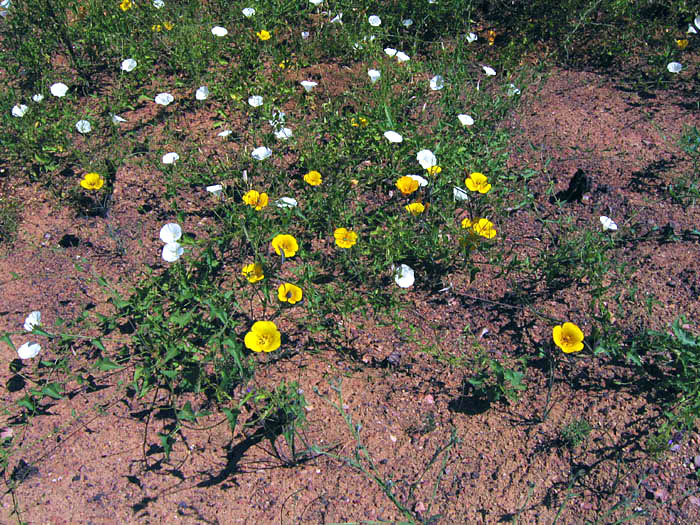 The Calochortus clavatus lily produces tall stems up to 1 metre (3.3 ft) in height and only basal leaves.
Atop the stem is a lily bloom with sepals up to 4 centimeters long. The petals are up to 5 centimeters long and yellow with a darker line or series of bands near the base, which are often red. The cup of the flower is filled with hairs which have clubbed ends. The anthers are often deep purple.
The Calochortus clavatus lily produces tall stems up to 1 metre (3.3 ft) in height and only basal leaves.
Atop the stem is a lily bloom with sepals up to 4 centimeters long. The petals are up to 5 centimeters long and yellow with a darker line or series of bands near the base, which are often red. The cup of the flower is filled with hairs which have clubbed ends. The anthers are often deep purple.
The capsule fruit is up to 9 centimeters long.

Fritillaria meleagris is a Eurasian species of flowering plant in the lily family. Its common names include snake's head fritillary, snake's head (the original English name), chess flower, frog-cup, guinea-hen flower, guinea flower, leper lily (because its shape resembled the bell once carried by lepers), Lazarus bell, chequered lily, chequered daffodil, drooping tulip or, in northern Europe, simply fritillary.
http://easss.com/travel/hotel/agoda
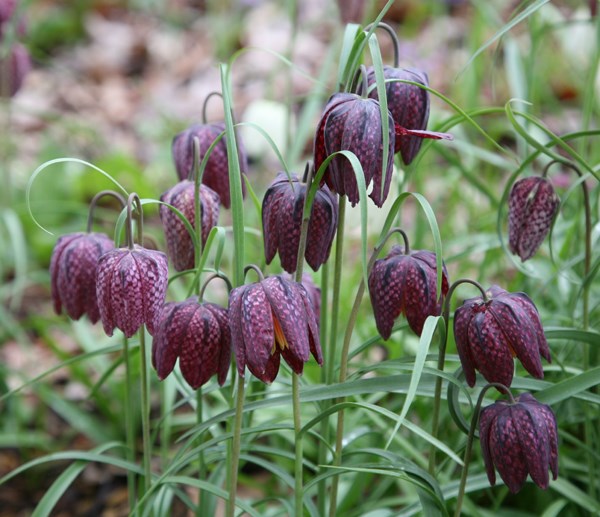 The name Fritillaria comes from the Latin fritillus meaning dice-box, possibly referring to the chequered pattern on the flowers although this derivation has been disputed. The name meleagris means "spotted like a guineafowl". The common name "snake's head" probably refers to the somewhat snakelike appearance of the nodding flower heads on their long stems. Vita Sackville-West called it "a sinister little flower, in the mournful colour of decay".
The name Fritillaria comes from the Latin fritillus meaning dice-box, possibly referring to the chequered pattern on the flowers although this derivation has been disputed. The name meleagris means "spotted like a guineafowl". The common name "snake's head" probably refers to the somewhat snakelike appearance of the nodding flower heads on their long stems. Vita Sackville-West called it "a sinister little flower, in the mournful colour of decay".
 The flower has a chequered pattern in shades of purple, or is sometimes pure white. It flowers from March to May and grows between 15–40 cm (6–16 in) in height. The plant has a button-shaped bulb, about 2 cm in diameter, containing poisonous alkaloids. It grows in grasslands in damp soils and river meadows at altitudes up to 800 m (2,625 ft).
The flower has a chequered pattern in shades of purple, or is sometimes pure white. It flowers from March to May and grows between 15–40 cm (6–16 in) in height. The plant has a button-shaped bulb, about 2 cm in diameter, containing poisonous alkaloids. It grows in grasslands in damp soils and river meadows at altitudes up to 800 m (2,625 ft).
The Virginia strawberry, wild strawberry, or common strawberry (Fragaria virginiana) is one of two species of strawberry that were hybridized to create the modern domesticated garden strawberry.
http://easss.com/travel/hotel/trivago
 Its natural range is confined to North America, in the United States (including Alaska) and Canada, although a popular variety called "Little Scarlet" is grown only in Great Britain, having been imported from the United States in the early 1900s.
Its natural range is confined to North America, in the United States (including Alaska) and Canada, although a popular variety called "Little Scarlet" is grown only in Great Britain, having been imported from the United States in the early 1900s.
There are four recognized subspecies:
- Fragaria virginiana subsp. glauca (formerly known as F. ovalis)
- Fragaria virginiana subsp. grayana
- Fragaria virginiana subsp. platypetala
- Fragaria virginiana subsp. virginiana
All strawberries have a base haploid count of 7 chromosomes. Fragaria virginiana is octoploid, having eight sets of these chromosomes for a total of 56. These eight genomes pair as four distinct sets, of two different types, with little or no pairing between sets. The genome composition of the octoploid strawberry species has generally been indicated as AAA'A'BBB'B'.
 The A-type genomes were likely contributed by diploid ancestors related to Fragaria vesca or similar species, while the B-type genomes seem to descend from a close relative of Fragaria iinumae. The exact process of hybridization and speciation which resulted in the octoploid species is still unknown, but it appears that the genome compositions of both Fragaria chiloensis and Fragaria virginiana (and by extension the cultivated octoploid strawberry as well) are identical.
The A-type genomes were likely contributed by diploid ancestors related to Fragaria vesca or similar species, while the B-type genomes seem to descend from a close relative of Fragaria iinumae. The exact process of hybridization and speciation which resulted in the octoploid species is still unknown, but it appears that the genome compositions of both Fragaria chiloensis and Fragaria virginiana (and by extension the cultivated octoploid strawberry as well) are identical.
Pulsatilla patens is a species of flowering plant in the family Ranunculaceae, native to Europe, Russia, Mongolia, China, Canada and the United States. Common names include Eastern pasqueflower, prairie smoke, prairie crocus, and cutleaf anemone.
http://easss.com/travel/hotel/trivago
 Advocates report that the population of Pulsatilla patens is declining, due to the synergy between the prairie crocus and shortgrass prairie ecosystems. Plowing up the prairie causes the crocus to disappear.
Advocates report that the population of Pulsatilla patens is declining, due to the synergy between the prairie crocus and shortgrass prairie ecosystems. Plowing up the prairie causes the crocus to disappear.
 "Pulsatilla" is from the Latin for "pulsing" or "beating", perhaps alluding to the blood of the sacrificial lambs of Passover. "Pasque" is probably from the Hebrew "paschal", "relating to Passover". The Pasqueflower begins blooming as soon as the mountain snow melts, about the time of Passover.
"Pulsatilla" is from the Latin for "pulsing" or "beating", perhaps alluding to the blood of the sacrificial lambs of Passover. "Pasque" is probably from the Hebrew "paschal", "relating to Passover". The Pasqueflower begins blooming as soon as the mountain snow melts, about the time of Passover.
"Ludoviciana" means "from Louisiana" -- in this case (as in most), from the Louisiana Territory, not from the state of Louisiana. "Patens" is Latin for "spreading, open" and may refer to the plant's habit of spreading over large areas and/or to the widely spreading petals or seed head. And finally, "Anemone" is from the Greek for "wind".
This perennial plant is about ½' tall when it blooms, but it later becomes ¾–1¼' tall. It consists of several basal leaves and one or more flowering stalks that develop at about the same time during the spring. The basal leaves are 1-3" long and similarly across; they are palmately divided into dichotomously branched linear lobes. These lobes are 1-3 mm. across; a few coarse teeth may occur along their margins.
The basal leaves are medium green and hairless to sparsely hairy above, while below they are densely covered with long silky hairs. The petioles of basal leaves are 1-4" long and densely hairy. Each flowering stalk is light to medium green, terete, relatively stout, and densely hairy. Near the middle of its length, there is a whorl of 3 leafy bracts that are sessile or nearly so. These leafy bracts are about 1-2" long and similarly across; they are similar in appearance to the basal leaves. Each stalk terminates in a single flower that becomes more or less erect when it is fully open.
Cultivation: The preference is full sun, dry-mesic to dry conditions, and a gritty soil containing gravel or rocky material. The root system may rot if the soil becomes waterlogged from poor drainage. Open areas with scant ground vegetation are preferred as this reduces competition from other plants.
Epiphyllum oxypetalum (Dutchman's pipe or queen of the night) is a species of cactus and one of the most cultivated species in the genus. Though it is sometimes referred to as a nightblooming cereus, it is not closely related to any of the species in the tribe Cereeae, such as Selenicereus, that are more commonly known as nightblooming cereus. All Cereus bloom at night and are terrestrial plants; all Epiphyllum are epiphytic.
 In India it is called Brahma Kamalam, named after the Hindu god of creation, Lord Brahma. It is also believed that the wishes of People who pray to God while the flower is blooming will be fulfilled.
Native to Central America and Northern South America, E. oxypetalum blooms rarely and only at night and the flower wilts before dawn.
In 1909, C. A. Purpus collected a slightly different type in St. Ana, Orizaba, Mexico. It has carmine red outer petals and the flowers have an unpleasant smell, rather than being fragrant. It was originally named Phyllocactus purpusii, but does probably not deserve any botanical recognition.
http://easss.com/store/macys
An easily cultivated, fast growing Epiphyllum. It flowers in late spring or early summer; large specimens can produce several crops of flowers in a season. This is the most commonly grown of the Epiphyllum species.
In India it is called Brahma Kamalam, named after the Hindu god of creation, Lord Brahma. It is also believed that the wishes of People who pray to God while the flower is blooming will be fulfilled.
Native to Central America and Northern South America, E. oxypetalum blooms rarely and only at night and the flower wilts before dawn.
In 1909, C. A. Purpus collected a slightly different type in St. Ana, Orizaba, Mexico. It has carmine red outer petals and the flowers have an unpleasant smell, rather than being fragrant. It was originally named Phyllocactus purpusii, but does probably not deserve any botanical recognition.
http://easss.com/store/macys
An easily cultivated, fast growing Epiphyllum. It flowers in late spring or early summer; large specimens can produce several crops of flowers in a season. This is the most commonly grown of the Epiphyllum species.
Stems erect, ascending, scandent or sprawling, profusely branched, primary stems terete, to 2–6 m long, flattened laterally, ligneous at base, secondary stems flat, elliptic-acuminate, to 30 cm x 10–12 cm, thin; margins shallowly to deeply crenate and ± undulate. Flowers produced from flattened portions, to 30 cm long, 12–17 cm wide, nocturnal, very fragrant.
 The principal odor component in the aroma is benzyl salicylate; pericarpel nude, slightly angled, green, bracteoles short; receptacle 13–20 cm long, 1 cm thick, brownish, arching, bracteoles narrow, ca 10 mm long; outer tepals linear, acute, 8–10 cm long reddish to amber; inner tepals oblanceolate to oblong, acuminate, to 8–10 cm long and 2,5 cm wide, whitish; stamens greenish white or white, slender and weak; style greenish white or white, 4 mm thick, as long as inner tepals, lobes many, pale yellow or white. Fruit oblong, 12 x 8 cm, purplish red, angled.
The principal odor component in the aroma is benzyl salicylate; pericarpel nude, slightly angled, green, bracteoles short; receptacle 13–20 cm long, 1 cm thick, brownish, arching, bracteoles narrow, ca 10 mm long; outer tepals linear, acute, 8–10 cm long reddish to amber; inner tepals oblanceolate to oblong, acuminate, to 8–10 cm long and 2,5 cm wide, whitish; stamens greenish white or white, slender and weak; style greenish white or white, 4 mm thick, as long as inner tepals, lobes many, pale yellow or white. Fruit oblong, 12 x 8 cm, purplish red, angled.
Plains coreopsis or calliopsis, Coreopsis tinctoria, is an annual forb. The plant is common to Canada, Northeast Mexico, much of the United States, especially the Great Plains and Southern states where it is often called "calliopsis."
http://easss.com/catalog/sears
It often grows in disturbed areas such as roadsides and cultivated fields.
 Growing quickly, Coreopsis tinctoria plants attain heights of 12 to 40 inches (30–100 cm). Leaves are pinnately-divided, glabrous and tending to thin at the top of the plant where numerous 1- to 1.5-inch (2.5-to 4-cm) flowers sit atop slender stems.
Flowers are brilliant yellow with maroon or brown centers of various sizes. Flowering typically occurs in mid-summer. The small, slender seeds germinate in fall (overwintering as a low rosette) or early spring.
Growing quickly, Coreopsis tinctoria plants attain heights of 12 to 40 inches (30–100 cm). Leaves are pinnately-divided, glabrous and tending to thin at the top of the plant where numerous 1- to 1.5-inch (2.5-to 4-cm) flowers sit atop slender stems.
Flowers are brilliant yellow with maroon or brown centers of various sizes. Flowering typically occurs in mid-summer. The small, slender seeds germinate in fall (overwintering as a low rosette) or early spring.
 Plains coreopsis is cultivated as an ornamental plant for gardens, and as a native plant for wildlife gardens and natural landscaping. It grows well in many types of soil, but seems to prefer sandy or well-drained soils. Although somewhat drought-tolerant, naturally growing plants are usually found in areas with regular rainfall. Preferring full sun, it will also grow in partial shade.
Plains coreopsis is cultivated as an ornamental plant for gardens, and as a native plant for wildlife gardens and natural landscaping. It grows well in many types of soil, but seems to prefer sandy or well-drained soils. Although somewhat drought-tolerant, naturally growing plants are usually found in areas with regular rainfall. Preferring full sun, it will also grow in partial shade.
Allium aflatunense is a species of plants in the amaryllis family, native to Kazakhstan and Kyrgyzstan in Central Asia. It is commonly grown as a garden plant in other regions.
http://easss.com/catalog/sears
 Allium aflatunense is a 36-inch-tall (0.9 m) bulbous perennial plant with basal, straplike leaves, and hollow, slightly ribbed scapes (flower stems). The flower heads are dense, globular umbels, about 4 inches (10 cm) across, made up of numerous star-shaped, purplish-pink flowers. It flowers in May and June, with seeds ripening in August. It is commonly sold as a bulb.
Allium aflatunense is often confused with A. hollandicum.
Allium aflatunense is a 36-inch-tall (0.9 m) bulbous perennial plant with basal, straplike leaves, and hollow, slightly ribbed scapes (flower stems). The flower heads are dense, globular umbels, about 4 inches (10 cm) across, made up of numerous star-shaped, purplish-pink flowers. It flowers in May and June, with seeds ripening in August. It is commonly sold as a bulb.
Allium aflatunense is often confused with A. hollandicum.
Allium aflatunense is generally hardy in USDA zones 4–8. The plant is suitable for use as a cut flower. While it prefers alkaline soil, it can tolerate poor soil conditions, as well as part shade (though it does best in full sun).
Allium hollandicum (aflatunense) is hardy throughout the UK but in higher rainfall areas it would be better planted in well drained situations and certainly positioned to get the sun in the late spring and early summer.
 The flowers are generally 60-75cm tall, the size of an orange in pale purple or deep lilac. Flowering are at their best in June. They can be planted in swarms where the slight variation in size, colour, maturity and height adds to their charm. Grow them where the foliage of other plants camouflages the leaves as they wither (at about flowering time). The pale greens of plants such as Alchemilla, the purples of the hardy herbaceous geraniums or the blues in the late Camassia all compliment their purple colours very well.
The flowers are generally 60-75cm tall, the size of an orange in pale purple or deep lilac. Flowering are at their best in June. They can be planted in swarms where the slight variation in size, colour, maturity and height adds to their charm. Grow them where the foliage of other plants camouflages the leaves as they wither (at about flowering time). The pale greens of plants such as Alchemilla, the purples of the hardy herbaceous geraniums or the blues in the late Camassia all compliment their purple colours very well.
Beaucarnea recurvata (elephant's foot, ponytail palm) is a species of plant in the family Asparagaceae, native to the states of Tamaulipas, Veracruz and San Luis Potosí in eastern Mexico.Despite its common name, it is not closely related to the true palms (Arecaceae). It was discovered in Mexico by a Frenchman in 1870, becoming popular in Europe and worldwide as an ornamental plant. There is a 350 year-old Beaucarnea specimen registered in Mexico.
http://easss.com/catalog/sears
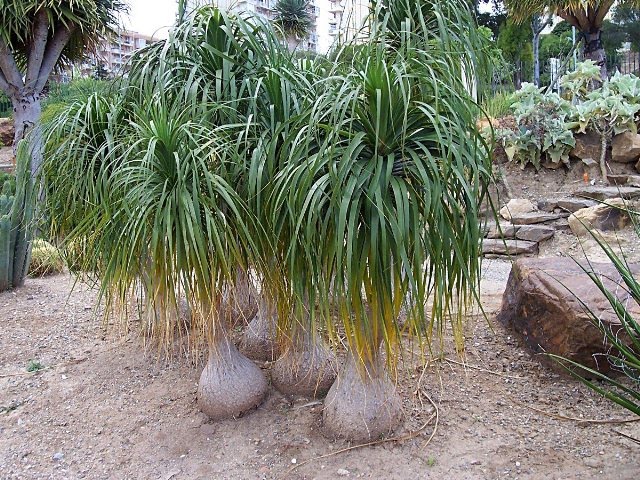 It is an evergreen perennial growing to 15 feet 6 inches (4.72 m) with a noticeable expanded caudex, for the purpose of storing water inside. The single palm-like stem produces terminal tufts of strap-shaped, recurved leathery leaves, sometimes hair lock-shaped in the ends, and with occasional panicles of small white flowers once the plant reaches over 10 years of age.
It is an evergreen perennial growing to 15 feet 6 inches (4.72 m) with a noticeable expanded caudex, for the purpose of storing water inside. The single palm-like stem produces terminal tufts of strap-shaped, recurved leathery leaves, sometimes hair lock-shaped in the ends, and with occasional panicles of small white flowers once the plant reaches over 10 years of age.
 There are 10 different species of this plant, according to the Institute of Ecology in Xalapa, state of Veracruz, which runs the Jardín Botánico Francisco Javier Clavijero botanical garden, where over 400 Beaucarneas are exhibited and more are grown in greenhouses for conservation purposes, in the "Colección Nacional de Beaucarneas" (Beaucarneas National Collection).
There are 10 different species of this plant, according to the Institute of Ecology in Xalapa, state of Veracruz, which runs the Jardín Botánico Francisco Javier Clavijero botanical garden, where over 400 Beaucarneas are exhibited and more are grown in greenhouses for conservation purposes, in the "Colección Nacional de Beaucarneas" (Beaucarneas National Collection).
This species is a perennial herb growing from a fleshy rhizome. It is scandent, climbing using tendrils, the stem reaching 4 meters long. The leaves are mainly alternately arranged, but they may be opposite, as well. They are somewhat lance-shaped and tipped with tendrils, and they are up 13 to 20 centimeters long. The showy flower has six tepals each up to 5 to 7.6 centimeters long. They are generally bright red to orange at maturity, sometimes with yellowish bases. The margins may be quite wavy. The six stamens also are long, up to 4 centimeters, and each bears a large anther at the tip that drops large amounts of yellow pollen. The style may be more than 6 centimeters long. One flower may weigh over 2.5 grams. The fruit is a fleshy capsule up to 6 to 12 centimeters long containing red seeds. Cultivars of this popular garden plant may vary from these wild-type characteristics; the cultivar 'Lutea' has all-yellow tepals, 'Citrina' is yellow with red markings, and 'Nana' is a dwarf. Whitish forms are known, as well.
 This plant is poisonous, toxic enough to cause human and animal fatalities if ingested. It has been used to commit murder, to achieve suicide, and to kill animals. Every part of the plant is poisonous, especially the tuberous rhizomes. As with other members of the Colchicaceae, this plant contains high levels of colchicine, a toxic alkaloid. It also contains the alkaloid gloriocine. Within a few hours of the ingestion of a toxic amount of plant material, a victim may experience nausea, vomiting, numbness, and tingling around the mouth, burning in the throat, abdominal pain, and bloody diarrhea, which leads to dehydration.
http://easss.com/catalog/sears
This plant is poisonous, toxic enough to cause human and animal fatalities if ingested. It has been used to commit murder, to achieve suicide, and to kill animals. Every part of the plant is poisonous, especially the tuberous rhizomes. As with other members of the Colchicaceae, this plant contains high levels of colchicine, a toxic alkaloid. It also contains the alkaloid gloriocine. Within a few hours of the ingestion of a toxic amount of plant material, a victim may experience nausea, vomiting, numbness, and tingling around the mouth, burning in the throat, abdominal pain, and bloody diarrhea, which leads to dehydration.
http://easss.com/catalog/sears

Tradescantia pallida is a species of spiderwort (a genus of New World plants) more commonly known as wandering jew, a name it shares with the closely related species T. fluminensis and T. zebrina. Other common names include purple secretia, purple heart and purple queen. It is native to the Gulf Coast region of eastern Mexico. Edward Palmer was the first European to observe and assign a Latin name to the type specimen near Ciudad Victoria, Tamaulipas in 1907.
http://easss.com/catalog/sears
 Description: T. pallida is an evergreen perennial plant of scrambling stature. It is distinguished by elongated, pointed leaves - themselves glaucous green, fringed with red or purple - and bearing small, sterile three-petaled flowers of white, pink or purple. Plants are top-killed by moderate frosts, but will often sprout back from roots. Protection by mulching will increase the chances of sprouting in marginal areas.
Description: T. pallida is an evergreen perennial plant of scrambling stature. It is distinguished by elongated, pointed leaves - themselves glaucous green, fringed with red or purple - and bearing small, sterile three-petaled flowers of white, pink or purple. Plants are top-killed by moderate frosts, but will often sprout back from roots. Protection by mulching will increase the chances of sprouting in marginal areas.
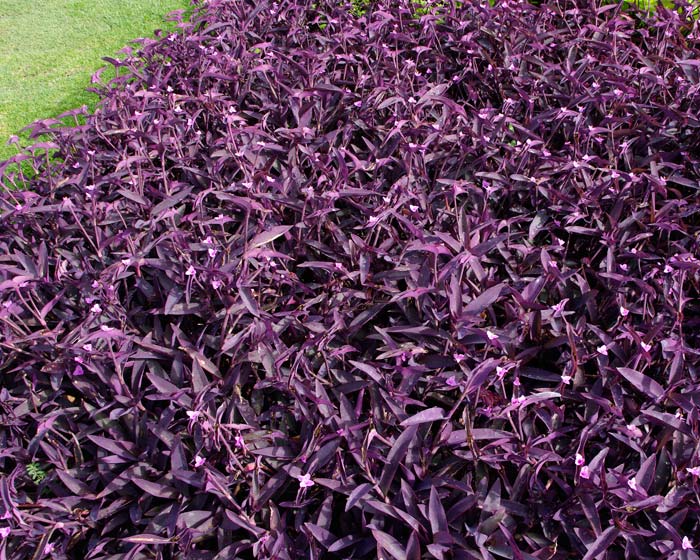 Cultivation: Widely used as an ornamental plant in gardens and borders, as a ground cover, hanging plant, or - particularly in colder climates where it cannot survive the winter season - houseplant, it is propagated easily by cuttings (the stems are visibly segmented and roots will frequently grow from the joints). However, this very characteristic, in addition to the fact that it is remarkably shade-tolerant and can thrive in a wide range of soil conditions, makes T. pallida quite formidable should it be encountered in situations where it has not been intentionally cultivated and carefully maintained. In areas throughout the southern United States and Australia, it is considered an invasive species and has defied many attempts at control or eradication.
As a houseplant, T. pallida has been judged exceptionally effective at improving indoor air quality by filtering out volatile organic compounds, a class of common pollutants and respiratory irritants, via a process known as phytoremediation.
Cultivation: Widely used as an ornamental plant in gardens and borders, as a ground cover, hanging plant, or - particularly in colder climates where it cannot survive the winter season - houseplant, it is propagated easily by cuttings (the stems are visibly segmented and roots will frequently grow from the joints). However, this very characteristic, in addition to the fact that it is remarkably shade-tolerant and can thrive in a wide range of soil conditions, makes T. pallida quite formidable should it be encountered in situations where it has not been intentionally cultivated and carefully maintained. In areas throughout the southern United States and Australia, it is considered an invasive species and has defied many attempts at control or eradication.
As a houseplant, T. pallida has been judged exceptionally effective at improving indoor air quality by filtering out volatile organic compounds, a class of common pollutants and respiratory irritants, via a process known as phytoremediation.
Numerous cultivars are available, of which 'Purpurea' with purple foliage has gained the Royal Horticultural Society's Award of Garden Merit.
Akebia quinata (Chocolate Vine or Five-leaf Akebia) is a shrub that is native to Japan, China and Korea, and naturalized in the eastern United States from Georgia to Michigan to Massachusetts.
http://easss.com/store/walmart
 It grows to 10 metres or more in height and has compound leaves with five leaflets. The flowers are clustered in racemes and are chocolate-scented, with three or four sepals. The fruits are sausage-shaped pods which contain edible pulp. The gelatinous placentation is littered with seeds but have a sweet flavor, so they used to be enjoyed by children playing out in the countryside in the olden days in Japan[citation needed] . The rind, with a slight bitter taste, is used as vegetable, e.g., stuffed with ground meat and deep-fried. The vines are traditionally used for basket-weaving.
It grows to 10 metres or more in height and has compound leaves with five leaflets. The flowers are clustered in racemes and are chocolate-scented, with three or four sepals. The fruits are sausage-shaped pods which contain edible pulp. The gelatinous placentation is littered with seeds but have a sweet flavor, so they used to be enjoyed by children playing out in the countryside in the olden days in Japan[citation needed] . The rind, with a slight bitter taste, is used as vegetable, e.g., stuffed with ground meat and deep-fried. The vines are traditionally used for basket-weaving.
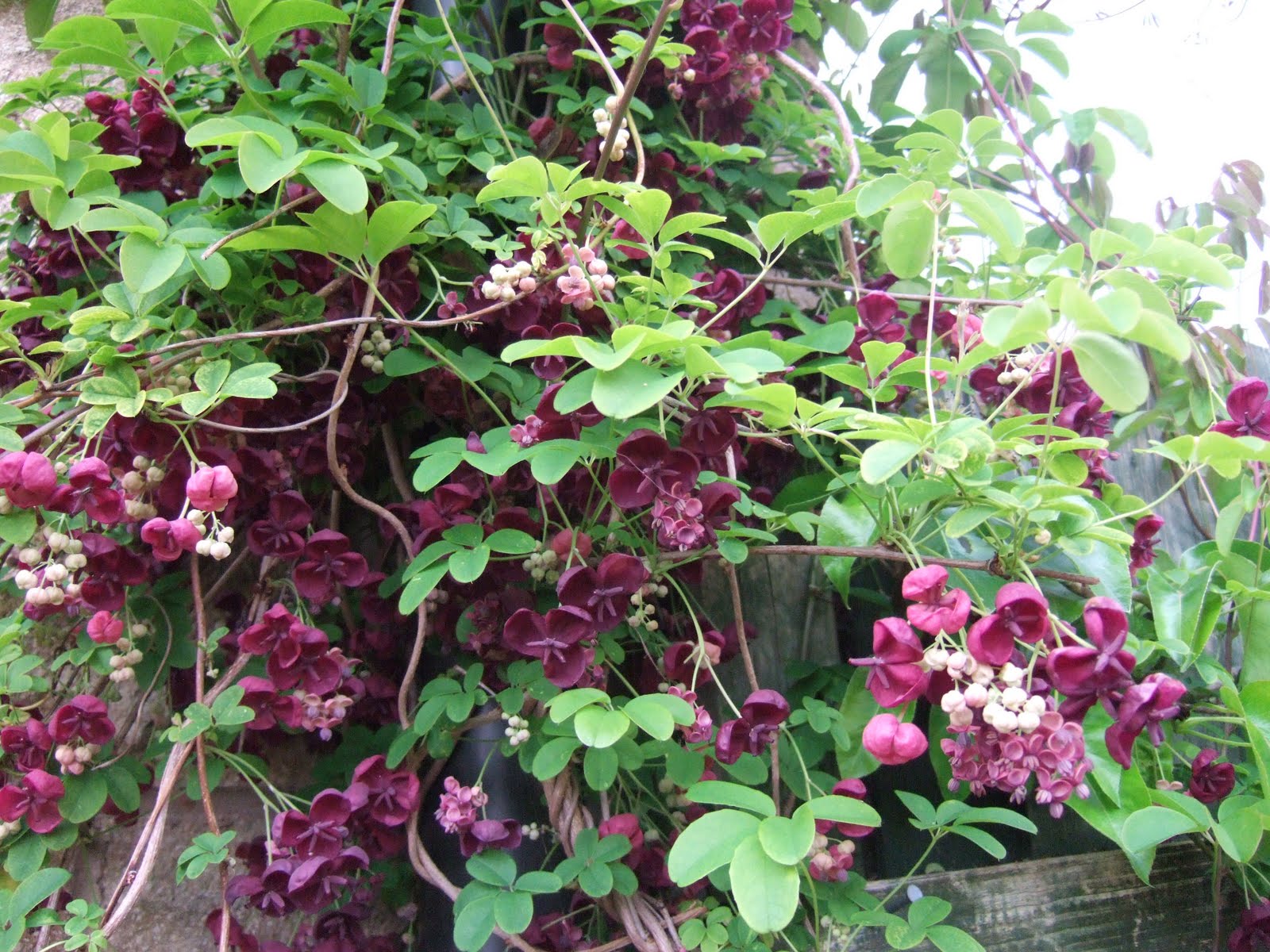 In China, A. quinata is referred to as 木通 ("mù tōng" (Pinyin) or "mu tung" (Wade-Giles)) meaning "woody thoroughgoing (plant)". It is also occasionally known as 通草 ("tōng cǎo" (Pinyin) or "tung tsao" (Wade-Giles)) meaning "throroughgoing grass". In the Chinese pharmacopoeia it is believed to be therapeutic as a diuretic, antiphlogistic, galactagogue and analgesic. The principal use of the herb in China is as a traditional remedy for insufficient lactation in nursing mothers. The medicinal part of the plant is the woody stem which is sliced in transverse sections and prepared as a decoction. The stem contains approximately 30% potassium salts thus giving the diuretic action.
In China, A. quinata is referred to as 木通 ("mù tōng" (Pinyin) or "mu tung" (Wade-Giles)) meaning "woody thoroughgoing (plant)". It is also occasionally known as 通草 ("tōng cǎo" (Pinyin) or "tung tsao" (Wade-Giles)) meaning "throroughgoing grass". In the Chinese pharmacopoeia it is believed to be therapeutic as a diuretic, antiphlogistic, galactagogue and analgesic. The principal use of the herb in China is as a traditional remedy for insufficient lactation in nursing mothers. The medicinal part of the plant is the woody stem which is sliced in transverse sections and prepared as a decoction. The stem contains approximately 30% potassium salts thus giving the diuretic action.
Echeveria elegans (Mexican snow ball, Mexican gem, white Mexican rose) is a species of flowering plant in the Crassulaceae family, native to semi-desert habitats in Mexico.
Echeveria elegans is a succulent evergreen perennial growing to 5–10 cm (2–4 in) tall by 50 cm (20 in) wide, with tight rosettes of pale green-blue fleshy leaves, bearing 25 cm (10 in) long slender pink stalks of pink flowers with yellow tips in winter and spring.
http://easss.com/store/walmart
 Echeveria elegans is cultivated as an ornamental plant for rock gardens planting, or as a potted plant. It thrives in subtropical climates, such as Southern California
As it does not tolerate temperatures below 7 °C (45 °F), in temperate regions it is grown under glass with heat. It has gained the Royal Horticultural Society's Award of Garden Merit.
Echeveria elegans is cultivated as an ornamental plant for rock gardens planting, or as a potted plant. It thrives in subtropical climates, such as Southern California
As it does not tolerate temperatures below 7 °C (45 °F), in temperate regions it is grown under glass with heat. It has gained the Royal Horticultural Society's Award of Garden Merit.
 Like others of its kind, it produces multiple offsets which can be separated from the parents in spring, and grown separately - hence the common name "hen and chicks", applied to several species within the genus Echeveria.
Like others of its kind, it produces multiple offsets which can be separated from the parents in spring, and grown separately - hence the common name "hen and chicks", applied to several species within the genus Echeveria.
Echinocereus triglochidiatus is a species of hedgehog cactus known by several common names, including Kingcup cactus, Claretcup, and Mojave mound cactus. This cactus is native to the southwestern United States and northern Mexico, where it is a resident of varied habitats from low desert to rocky slopes, scrub, and mountain woodland. It is most abundant in shady areas. There are a number of varieties of this highly variable cactus species, but not all are universally recognized. In general it is a mounding  cactus, forming bulbous piles of few to hundreds of spherical to cylindrical stems. It is densely spiny and somewhat woolly.
http://easss.com/store/walmart
The showy flower is a funnel shaped bloom up to 8 or 9 centimeters wide and bright scarlet red to orange-red tepals. There is a thick nectar chamber and many thready pink stamens at the center of the corolla. The flowers are pollinated by hummingbirds. One variety, var. arizonicus, is federally listed as an endangered species in the United States. It is limited to the intersection of Arizona and New Mexico in the United States with Mexico. This variety is sometimes included within Echinocereus coccineus.
cactus, forming bulbous piles of few to hundreds of spherical to cylindrical stems. It is densely spiny and somewhat woolly.
http://easss.com/store/walmart
The showy flower is a funnel shaped bloom up to 8 or 9 centimeters wide and bright scarlet red to orange-red tepals. There is a thick nectar chamber and many thready pink stamens at the center of the corolla. The flowers are pollinated by hummingbirds. One variety, var. arizonicus, is federally listed as an endangered species in the United States. It is limited to the intersection of Arizona and New Mexico in the United States with Mexico. This variety is sometimes included within Echinocereus coccineus.

Ficus carica
Or the common Fig is a large purple fig that is native to Southwest Asia and some parts of Europe.Its fruits
is often found in supermarkets,fruit stores,etc.
It is commonly eaten as a Quick snack, mixed in salad etc.
Links:
http://en.wikipedia.org/wiki/Common_fig
 Leaves of Salvia nemorosa have been used in Turkish medicine to stop bleeding by applying externally. Diterpenes and triterpenes have been isolated from aerial parts of S. nemorosa: nemorone, nemorosin, horminone, 7-acetylhorminone, salvinemorol, megastigmane glycosides (salvionosides A, B and C), pachystazone, salvipisone, α-amyrin, ursolic and oleanolic acids, stigmast-7-en-3-one, 24-methylenecycloartanol, stigmast-4-en-3-one, β-sitosterol, stigmast-7-enol, as well as flavonoids salvigenin, eupatilin, apigenin and luteolin.
Leaves of Salvia nemorosa have been used in Turkish medicine to stop bleeding by applying externally. Diterpenes and triterpenes have been isolated from aerial parts of S. nemorosa: nemorone, nemorosin, horminone, 7-acetylhorminone, salvinemorol, megastigmane glycosides (salvionosides A, B and C), pachystazone, salvipisone, α-amyrin, ursolic and oleanolic acids, stigmast-7-en-3-one, 24-methylenecycloartanol, stigmast-4-en-3-one, β-sitosterol, stigmast-7-enol, as well as flavonoids salvigenin, eupatilin, apigenin and luteolin.




















.jpg)











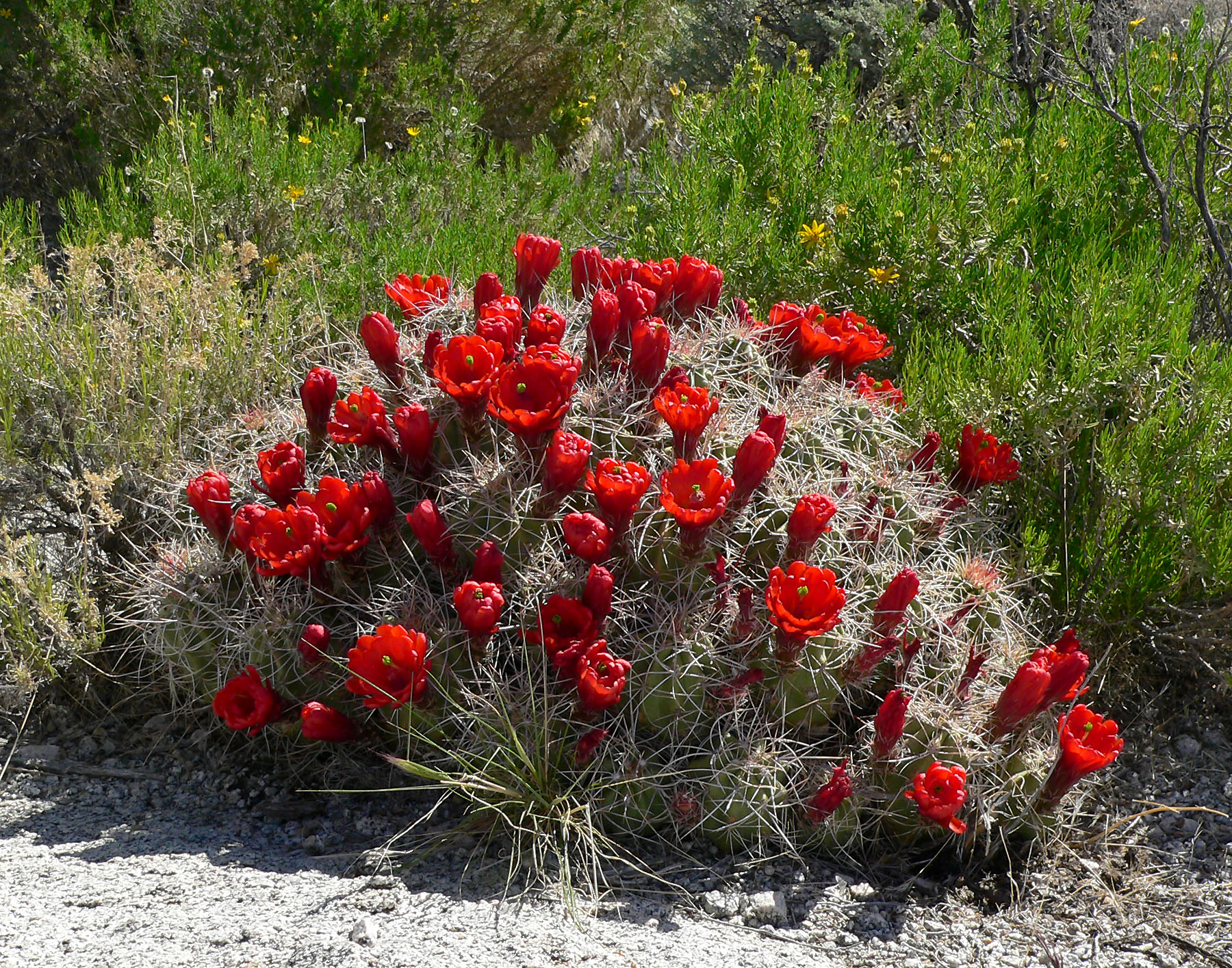



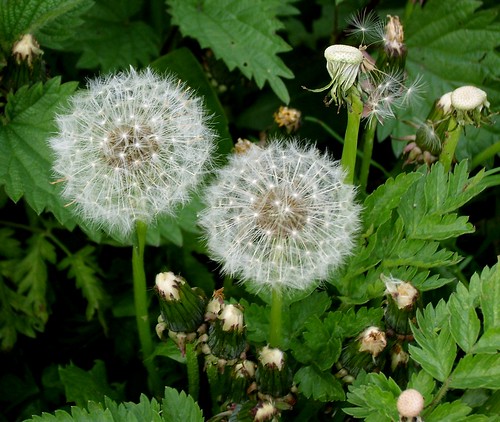





.jpg)
4.jpg)
